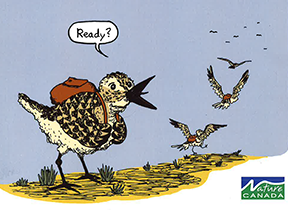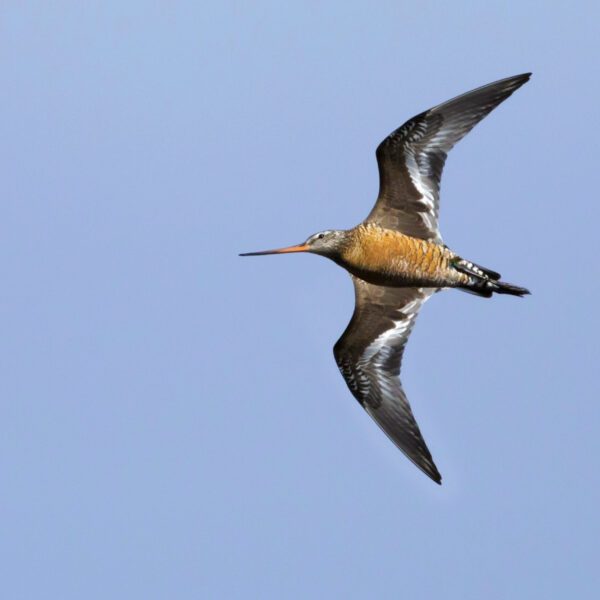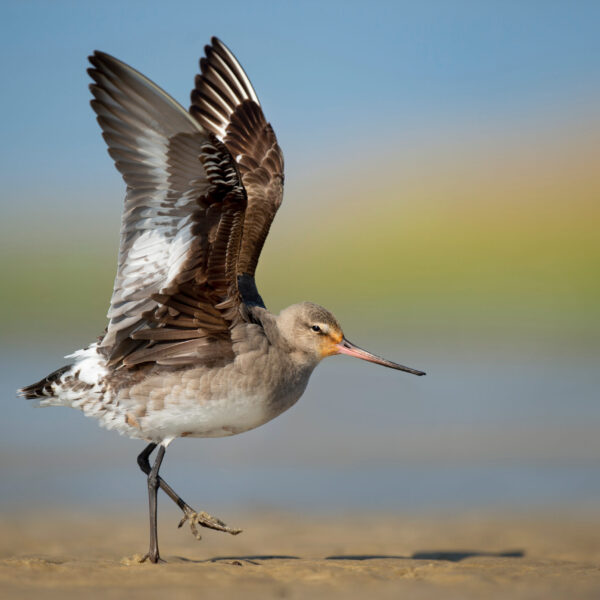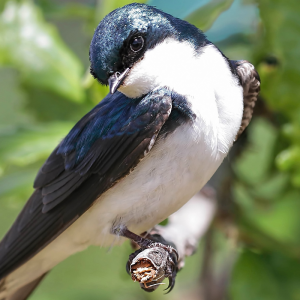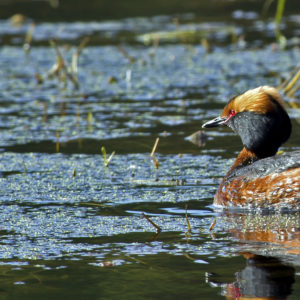The Story of Bico, the Hudsonian Godwit
Hudsonian Godwit
Limosa haemastica
COSEWIC status (2019): Threatened
Characteristics:
The Hudsonian Godwit is a large shorebird notable for its graceful long upturned bill, its long legs and boldly colored breeding plumage. The stilt-like legs allow the Hudsonian Godwit to wade out into deeper water, using their long bills which are flexible at the tip, to find and eat invertebrate prey in the mud.
Life History:
Wetland and coastal habitat throughout the Americas are very important to this shorebird. They rely on these habitats for every stage of their life, from breeding in the arctic, to relaxing in the southern summer, and of course during its marathon migration. Shorebird migrations are timed very carefully to match up with a short arctic summer, so birds fly all the way from the southern tip of South America to the Arctic in spring, arriving as mud is exposed during the snow melt. to ensure that there is enough food and that their young are able to leave before the frost comes again in August. Each pair broods between two and four eggs in mid summer. Adults depart the breeding grounds weeks before the young, whose southward migration in the late summer takes a large proportion of their population south through Hudson and James Bay, and eventually across the continents to southern South America.
Download The Story of Bico Comic →
Challenges:
The Hudsonian Godwit is considered Threatened by the Committee on the Status of Endangered Wildlife in Canada (COSEWIC), meaning they are likely to become endangered if nothing is done to reverse the factors leading to the decline. With their massive migration, there are many natural challenges that the species face, including predators, extreme weather events, exhaustion, resource scarcity, hunting and competition. Human altered environments add the challenge of degrading habitat quality by altering, polluting or altogether removing wetlands and coastal habitats on which the species depend. We introduce threats such as illegal hunting, unmanaged dog and cat populations, recreational activities at their stopover sites, urban light pollution which can draw them off their routes, and the varied and cumulative effects of climate change that exacerbate many of these challenges.
Did you know?
Because of their long migration and how quickly they move through the Americas, the Hudsonian Godwit was thought to be very rare. After World War II, when the North American ornithologists started communicating with South American ornithologists, they discovered that the species was more abundant than believed, though it remains one of the shorebirds with the most limited breeding range in the Arctic and subarctic.
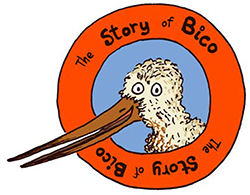
Check out the story of Bico, the Hudsonian Godwit!
Download Comic →
If you enjoyed the story of Bico, visit the Rufus the Red Knot!
